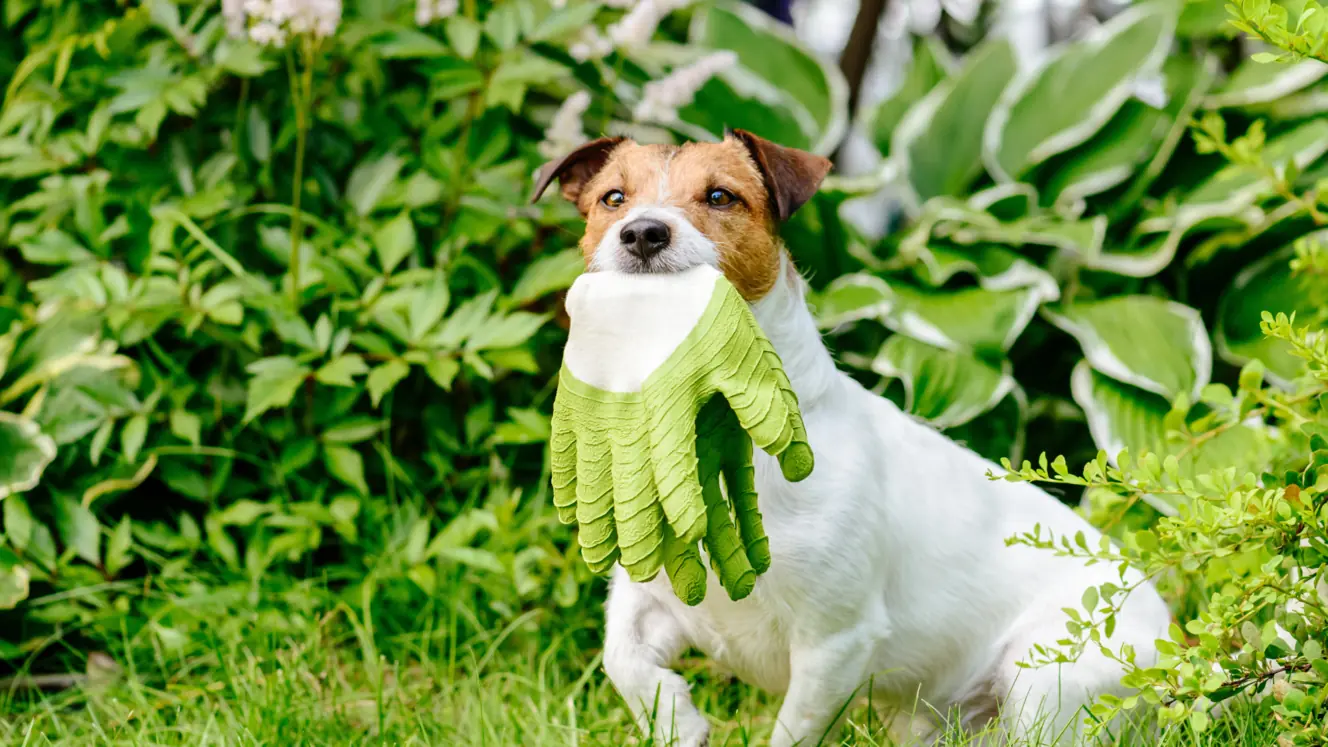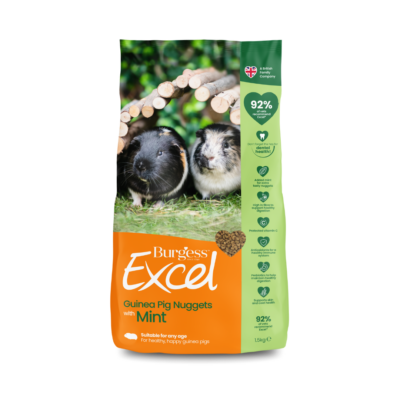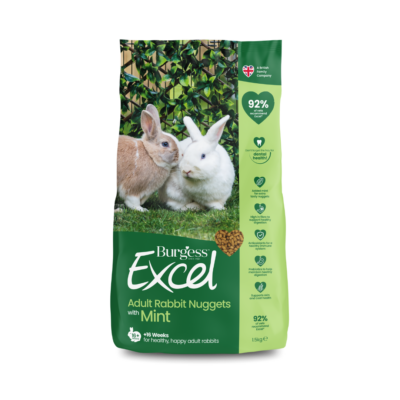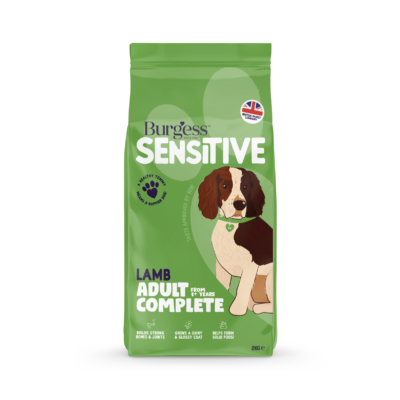
Dogs dallying among the African daisies? Cats curled up in the camellias? Rabbits romping by the roses? Is it really possible to enjoy a decorative, flower-filled, flourishing garden if you have pets?
According to gardening guru Monty Don, with a little give and take it is. When discussing his dogs, he says that “they (rarely) dig holes or crash through the flower beds.” Although he admits: “They do treat the long paths as bowling alleys down which they career in chase of the ball that we are obliged to throw, but it is harmless enough.”
In fact, as Gardeners’ World magazine suggests: “There are lots of things you can do to ensure you live in harmony with your four-legged friend, including planting non-toxic plants, creating dedicated dog areas and keeping the garden secure.”
Striking a balance enables you to enjoy quality garden time with your pets
Ayegardening, a Surrey-based landscaping company believes it’s all about striking a balance between providing a safe environment for your pets and preserving the aesthetic appeal of your garden.
The company says: “Designing a pet-friendly garden needs careful planning, but the result is a safe and fun space that both you and your pets can enjoy together. By choosing non-toxic plants, installing secure boundaries, and carefully choosing your landscaping, you can transform your garden into a haven for your beloved companions. A pet-friendly garden not only enriches their lives but can also deepen the bond between you and your pet as you spend quality time together in your garden.”
To help you plan your garden layout and pet-friendly planting, we’ve compiled a handy list of DOs and DON’Ts...
TOP TIP!
For a garden that both people and pets can enjoy, the RSPCA suggests:
- For rabbits and guinea pigs, attach a large run onto their shelter for exercise
- For cats, include trees to scratch and climb
- For dogs, designate digging areas
DO make the garden an inviting place to be
Gardeners’ World suggests: “Creating different routes through the garden, such as clearly defined paths and designated play or digging areas will keep your dog stimulated. Differing textures of the surfaces can be stimulating underfoot, and plants such as salix and ornamental grasses dance and sway, providing entertainment.”
Creating paths through your borders will also discourage your pets from running roughshod through your plants, or you could add a low-growing box hedge to protect them, or even opt for raised beds.
PDSA advises: “Paved paths are best for pets. Stones and gravel can hurt their feet or get stuck between their paws. Some dogs might pick up stones and accidentally swallow them. Paved paths can also help keep your pet's nails nice and short by naturally wearing them down.”
TOP TIP!
Dogs wee on lawns – fact. To avoid those unsightly yellow patches, Gardeners’ World recommends hosing down the area after they’ve spent a penny.
Blue Cross advises: “Trees or platforms around your garden can provide cats with a place to observe the world below. For rabbits, a secure run with a shelter on the lawn is best so your pet is safe from predators and can’t nibble garden plants. Many plants can also provide stimulation and interest for pets, cats like catnip or catmint for example.”
If you have small pets, why not grow forage especially for them? There are all sorts of safe plants and herbs you can grow in a garden, window box or even a plant pot. There’s even a book, Gardening with Rabbits, by horticulturist and rabbit owner Dr Twigs Way available from Rabbit Welfare. It provides you with all the information you need to grow bunny-friendly plants including alfalfa, blackberry, borage, chicory, chickweed, comfrey, cranesbills, golden rod, and meadowsweet.
TOP TIP!
Dogs Trust recommends designating a quiet spot with shade, shelter and fresh drinking water for your pets to relax in. This will also keep them protected from the sun on especially hot days.
DO plant sturdy, pet-friendly plants
This is especially important if you have a young, inquisitive dog who like to investigate anything and everything with their paws, particularly if they are any kind of Terrier (the name is a giveaway – 'Terrier' comes from the Latin word Terra, meaning earth).
Gardeners’ World recommends: “Boisterous dogs can damage young plants, or those with delicate stems, either by digging them up or running through them. Plant large, established perennials and choose robust plants such as nepeta (catmint), astilbe and hardy geranium (avoid Pelargonium species, which can be toxic to dogs and, confusingly, have the common name geranium). Use a good backbone of sturdy shrubs such as viburnum or shrub roses.”
Other attractive pet-safe plants that will add colour, interest and scent to your garden include snapdragons, asters, camellias, rose, sunflowers, elaeagnus, centaurea (cornflower), impatiens and calendula.
Dogs Trust explains: “Digging is normal dog behaviour, but you won’t want your pet to dig up your carefully planted shrubs. Dogs dig for all kinds of reasons. They might be looking for the source of an enticing smell or spreading scent from the sweat glands in their paws. They could be roughing up the ground to prepare a cool and comfy resting spot or burying something they want to keep safe for later.”
The charity recommends making a digging pit to help your canine chum dig in a way that’s fun for them, while also protecting your flowerbeds.
How to make a digging pit
- Choose an area of your garden that you're happy for your dog to dig in.
- Find a sturdy container (like a cat litter tray or a heavy-duty plastic box).
- Dig a hole deep enough so the top of the container is flush with ground level.
- Fill the container with the earth you’ve dug out from the hole. Or you can use dog-friendly sand.
Dogs Trust says: “Teach your dog to dig in this area by scattering or burying treats for them to find. You could also half-bury some of their outdoor toys for them to dig out.”
TOP TIP!
Slugs and snails may seem pretty harmless, but they can carry lungworm, a potentially fatal disease in dogs. Dogs can become infected if they eat slugs and snails deliberately, or by accident, for example when munching on grass, drinking from puddles or outdoor water bowls, or picking up toys left outside. A regular vaccination and parasite routine, as advised by your vet, will provide protection against worms, ticks, fleas and other nasties.
DON’T plant anything poisonous
If you have pets, it’s absolutely essential to gen up on your plant knowledge.
Gardeners’ World warns: “Many garden plants are potentially toxic to dogs. They include buttercup, chrysanthemum, aconite, daffodil, daphne, delphinium, foxglove, hydrangea, oak, tomato, wisteria and yew (Taxus baccata). If you notice any worrying symptoms and think your dog may have ingested part of a plant, take your pet to the vet.”
Most evergreens and plants that grow from bulbs are poisonous to rabbits – Rabbit Welfare has a comprehensive list. Cats Protection has a list of outdoor plants that are poisonous to cats as well as a list of cat-friendly ones. To help you identify what’s safe and what’s not, Gardeners’ World even has a video on plants that are toxic to dogs.
DO think about safety and security
A good fence is essential to keep your pet safe and secure in the garden. PDSA advises: “Make sure it's in good repair. Your pet might be able to squeeze through any gaps or holes and go on an unwanted adventure! Your fence needs to be tall enough that your pet can't jump over it. Dogs and rabbits might be able to dig under your fence so check regularly for escape tunnels.”
Gardeners’ World comments: “Some dogs will dig under fences, or escape through holes in fences, so make sure your borders are secure at the base. Dogs can jump surprisingly high, so make sure your fences are at least 6ft high if you have a medium-sized dog. Keep gates secure at all times.”
Also ensure your compost bin is secure and off-limits. Gardeners’ World recommends: “Compost bins containing food scraps can potentially be attractive to dogs, and may contain contents that can harm them. Some foods, such as avocados, grapes, raisins and onions can be harmful, so make sure that they can't get into your bin.”
TOP TIP!
Sheds are potentially packed with sharp implements and harmful chemicals, so keep doors firmly shut to protect inquisitive pets – but always check your pet is not inside first! The same goes for summerhouses and conservatories, which can become like ovens on a hot day.
DON’T use chemicals or cocoa mulch
If you have pets, ditch the slug pellets. Also avoid chemicals including weed and bug killer, and insect-repellent citronella candles as these are toxic to all wildlife. Don’t use any additives to ponds or water features as your pets (and wildlife) will likely drink from them.
To keep garden pests at bay, why not try companion planting, where common plant combinations protect each other. Examples include growing nasturtiums with beans, mint with carrots (the strong smell apparently confuses pests) and marigolds, which repel whitefly and attract beneficial insects including hoverflies, lacewings and ladybirds which will munch up pesky aphids for you.
Also avoid cocoa mulch. While this might seem like a natural solution to keeping weeds at bay on your borders, this by-product of the chocolate industry can be harmful if eaten – and the chocolatey smell is tempting. Instead, use an alternative mulch such as bark chippings.
Some environmentally-friendly fertilisers contain fish by-products, blood meal and even ground poultry feathers – ingredients that some dogs will find appealing but will do them no good at all if they eat it. Using a liquid fertiliser is a safer option – but keep pets away until any product you use has completely dissolved.
TOP TIP!
If you think your pet has eaten a toxic plant or substance, Dogs Trust advises that you contact your vet straight away, as symptoms may not always be immediately obvious. Symptoms may include vomiting, diarrhoea and skin irritations, depending on the plant or substance and how much your pet has eaten.
ONLY THE VERY BEST FOR YOUR VERY IMPORTANT PETS!
Using the expertise and experience built over the centuries, Yorkshire-based family company Burgess Pet Care produces high-quality, award-winning pet foods – such as food for dogs with sensitivities, food specially created to support neutered cats – and has launched many innovations. These include the world’s first food specifically formulated for indoor rabbits and the world’s first indoor guinea pig nuggets which are made with a calm formula.
PET TALK If you love animals and want the latest pet news, expert advice and top tips, head over to the BURGESS BLOG >>
Is your dog a Burgess dog? Your cat a Burgess cat? Your small pets Burgess small pets? Join the Burgess Pet Club for exclusive offers and rewards.
- You can also sign up to the Excel Bunny Base – a safe Facebook community for rabbit guardians that are looking for advice and friendly discussions from likeminded owners – and there are lots of cute bunny photos and videos!
- Or why not join the Excel Squeak Squad on Facebook? Find advice and enjoy friendly discussions with likeminded guinea pig owners. You can also join Berry & Bramble, our special G-force guinea pigs, on weekly missions and fun competitions.
CARE MORE Find lots of useful advice on caring for all your pets from Burgess, the pet experts. Training, nutrition, grooming and general care. It’s all here >>
If you found this interesting, you may also like:
GARDEN DESIGNS FOR YOUR CAT Carefully manicured lawns, neat flowerbeds and tastefully trimmed shrubs might be your idea of garden heaven, but it’s likely that your cat has other ideas. To create an outdoor haven that will encourage your feline friend to stay closer to home, you need to think less Chelsea Flower Show and more a walk on the wild side…
HOW TO RABBIT-PROOF YOUR GARDEN Letting your bunnies loose to explore and forage around your garden will be much appreciated by your nose-twitching pals. However, creating and maintaining a rabbit-safe garden is not an easy task and there are lots of things to think about.
CREATE A GARDEN THAT BENEFITS YOUR DOG If you have outdoor space, it’s well worth considering how you can give it some extra dog appeal. Take inspiration from Dogs Trust, Battersea and Bath Cats & Dogs Home, which have all created sensory and enrichment gardens to keep curious canines mentally and physically stimulated.
WATCH OUT FOR THESE SPRINGTIME HAZARDS If you want to avoid a pet emergency this spring, it’s important to take a closer look at some springtime hazards (from Easter eggs and hot cross buns to toxic flowers and irritating insects) that vets would like pet owners to be aware of.
HELP YOUR PETS GET INTO THE EXERCISE GROOVE Spring is traditionally the time of year when we’re all planning to eat more healthily and up our exercise levels – but what about our pets?
FORAGING FOR YOUR SMALL FURRIES As well as high quality feeding hay and our specially formulated nuggets for rabbits, guinea pigs and chinchillas, you can help keep things interesting for your small pets by foraging for some tasty titbits yourself.
PUT A SPRING IN THEIR STEP Getting a regular vet check is very important because our pets can’t tell us that they have a problem such as earache, toothache, loss of vision or a pain in their tummy.
SHOULD LILIES CARRY A HEALTH WARNING? Did you know that lilies are so poisonous that a cat can suffer fatal kidney failure just from nibbling a leaf, licking pollen off their coat or even from drinking water from a vase with cut lilies in it?
SLUGS AND SNAILS AND PUPPY DOG TAILS Lungworm sounds nasty, and it is. It’s a parasite that can cause serious health problems in dogs. So, how do dogs get infected and what should dog owners do to protect their pets? Our in-house vet Dr Suzanne Moyes has some answers…
DOGS EAT GRASS – BUT WHY? If your canine chum likes grazing on grass from time to time, it’s nothing to worry about. It’s actually a common behaviour in many dogs. And, while there are all sorts of theories as to why they do it – from fulfilling their natural omnivore instinct to improving digestion or simply because they enjoy the interesting taste and texture – no one’s exactly sure why.
ESSENTIAL HEALTH CHECKS FOR OUR SMALL PETS Our small pets such as guinea pigs, chinchillas, rats, gerbils, hamsters and degus need us to keep a constant close eye on their health and wellbeing. But do you know what to look for?
GRASS-EATING CATS? NOT AS STRANGE AS IT SOUNDS… Scientists claim they’ve solved the mystery of why cats sometimes eat grass, but the answer’s not for the faint-hearted.
CREATE A SAFE OUTDOOR SPACE FOR YOUR CAT If you live by a busy road, have a nervous or disabled cat, it may just not be safe to let them wander around outside. The solution could be to provide them with a cat-safe outdoor space…
WHAT’S THE MOST SPECIAL THING ABOUT YOUR PET? If you love your dog, you’re a devoted cat guardian, your best bud is a bunny, or you’re obsessed with guinea pigs, then you’ll know just how firm a hold on your heart a fluffy, four-legged friend can have.
VACCINATIONS – VITAL FOR US AND OUR PETS Find out how vaccinations work, what dog vaccinations, cat vaccinations, rabbit vaccinations and ferret vaccinations protect against, when your pets should be vaccinated and lots more essential information…
PROTECT AND PREVENT Raising awareness of the deadly Rabbit Viral Haemorrhagic Disease 2 (RVHD2), find out why all rabbit owners should ensure their pets are vaccinated against this and other fatal diseases.
FLEAS – HOW TO EVICT THESE ITCHY, UNINVITED GUESTS How can you tell if your pet has fleas? What do fleas look like? Why do fleas love our cosy homes so much? Can fleas live on humans? What’s the difference between dog fleas and cat fleas? How long do fleas live? How serious a health risk are fleas? And, most importantly, what do you have to do to get rid of fleas?
HOW TO PROTECT YOUR GUINEAS AND BUNNIES FROM PESKY PARASITES When it comes to protecting our gorgeous small pets from mites, fleas, flies, ticks and mosquitoes – and any other irritating and unwelcome pests – a four-pronged attack is the best approach.
RABBITS AND GUINEA PIGS – IS INDOORS OR OUTDOORS BEST? Is the outdoor life better for bunnies and guinea pigs, or will these small pets have a more enriching time if they’re kept indoors?
KEEPING YOUR CAT SAFE IN THE GREAT OUTDOORS Allowing cat access to the outside world provides them with valuable exercise opportunities and mental stimulation. But what can you do to help keep them out of harm’s way?
HAVING A BARBECUE? MAKE SURE IT’S A SIZZLING SUCCESS WITHOUT ANY PET MISHAPS Veterinary charity PDSA warns: “All those tempting treats and glowing grills can be a danger for our much-loved pets. Heatstroke and burns. Bin raids and broken glass. There are a lot of potential dangers for pet owners to bear in mind.”

















